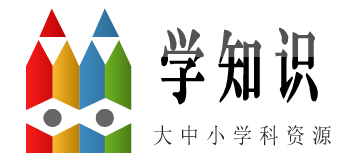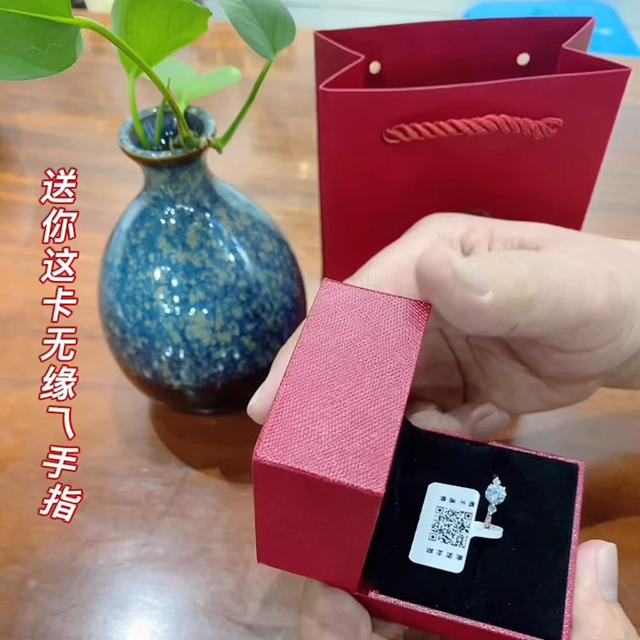关注“我的英语盒子”公众号,获取更多干货
Unit 1
Where did you go on vacation?

第一单元的语法重点是复合不定代词。
复合不定代词是指由 some-, any-, no-, every- 与 -thing, -one, -body 等构成的不定代词。
常见的复合不定代词有:

【注意】:
在使用复合不定代词时,要注意以下几点:
1.带 some 的复合不定代词通常用于肯定句中,而带 any 的复合不定代词通常用于否定句或疑问句中。如:
●I can’t see anything on the table. 我在桌子上什么也看不到。
●— Is there anyone in the classroom? 教室里有人吗?
— Yes. There is someone. 是的,有人。
2.在表示请求、提建议等带有委婉语气的疑问句和希望得到对方肯定答复的疑问句中,也用带 some 的复合不定代词。如:
●Would you like something to drink? 你想要喝点什么吗?
●Why not ask someone to go with you? 为什么不叫人和你一起去呢?
3.形容词修饰复合不定代词时,要放在复合不定代词的后面。如:
There's nothing serious. 没什么要紧的。
4.复合不定代词作主语时,谓语动词通常用单数形式。如:
Someone is waiting for you .有人正在等你。
【记忆口诀】:
复合代词美名扬,修饰成分后边藏;
如果它来主语,谓语动词用单数。
重要考点
1.辨析:get to/reach/arrive 都是“到达”的意思
get to+地点=reach+地点=arrive at+地点(小)=arrive in+地点(大)
注意:若他们后面要加地点副词 here,there,home等,则不需要加介词。
2.feel like 意为:“感受到;摸起来”,后跟宾语从句或名词。
如:I felt like I was a bird.我感觉我是一只鸟。
构成短语 feel like doing sth.意为“想做某事”。
如:I feel like eating.我想吃东西
3.few与little的区别:
|
肯定 |
否定 |
许多 |
|
|
可数 |
a few |
few |
quite a few |
|
不可数 |
a little |
little |
Quite a little |
4. Still no one seemed to be bored.仍然没有人感到烦闷。
(1)seem意为“好像;似乎;看来”,是个连系动词,构成的短语有:seem to do sth.好像做某事
如:They seem to wait for you.
seem(to be)+adj.似乎..….
如:He seemed(to be)ill yesterday.
It seems that+从句似乎……如:It seems that he was ill yesterday.
(2)bored(adj),意为“感到厌倦的、无聊的”,修饰人;
boring(adj),意为“令人厌倦的、无聊的”修饰物。
如:I got bored with the boring work.我对这无聊的工作感到厌倦。
相类似的词语还有:interested/tired/excited/amazed/surprised interesting/tiring/exciting/amazing/surprising
5.decide(v)决定 decide to do sth.–decide not to do sth.
decision(n)
6. Because of the bad weather, we couldn't't see anything below.
because of+短语 I had to move because of my job.
because+句子 如:I do it because I like it.
7.enough+名词 如:enough umbrellas
形容词/副词+enough 如:wet/quietly enough
enough
(形/副)+enough+to do sth.足够…去做…
足够…去做…
enough+(名)+ to do sth.
如:I have enough money to go to Beijing.我有足够的钱去北京。She is not old enough to go to school.她年龄不够,不能去上学。
8. 如此…以至于
[such+名短+that 从句:She is such a popular girl that.
so+形/副+that 从句:She is so popular that everyone likes her.
9.反身代词
myself/yourself/itself/herself/himself/ourselves/yourselves/themselves如:The child(herself)usually wears the clothes(herself).
10.What a difference a day makes!一天的差异多大啊!
感叹句的结构
What(a/an)+adj.+n+主+谓!
How+adj./adj.+主+谓!
习惯用法
(1)buy sth for sb./buy sb.sth 为某人买某物尝起来……
(2)taste+adj.除了…之外什么都没有
(3)nothing…but+V.(原形)尝试做某事
(4)try doing sth.
try to do sth.尽力做某事
try one's best to do sth 尽力做某事
(5)enjoy doing sth.喜欢做某事
(6)want to do sth.想去做某事
(7)start doing sth.开始做某事
(8)stop doing sth. 停止做某事
(9)look+adj 看起来
(10)dislike doing sth.不喜欢做某事
(11)Why not do sth.为什么不做……呢?
(12)so+adj+that+从句如此…以至于
(13)tell sb.(not)to do sth.告诉某人(不要)做某事
(14)forget to do sth.忘记去做某事
forget doing sth 忘记去做某事
Unit 2
How often do you exercise?

第二单元我们要学习的重点语法是频度副词。
频度副词是副词家族的一个分支,用来表示动作发生的频率。
常见的频度副词有:

【例句展示】:
1. She is always glad to help others. 她总是乐于助人。
2. My mother usually gets up at six. 我妈妈通常 6 点起床。
3. He often goes to the library. 他经常去图书馆。
4. Sometimes she plays tennis after school. 她有时放学后打网球。
5. I hardly know him. 我几乎不认识他。
6. I never go out at night. 我从不晚上出门。
【用法归纳】:
通过观察以上例句,我们可以发现:
1. 频度副词是一般现在时的“标志词”,表示经常性的动作或情况。
2. 频度副词通常置于系动词、助动词或情态动词之后,实义动词之前。(sometimes 可放在句首,表示强调,也可置于句尾。)
3. 频度副词按照发生的频率大小可排列为: always > usually > often > sometimes > hardly > never。
【注意】:
对表示频度的词(组)(如:once a week, every day 等)进行提问时,通常用 how often, 意为“多久一次”。如:
Miss Gao dances twice a week. (对划线部分提问) → How often does Miss Gao dance?
重要考点
1.—-How often do you usually go shopping? -Sometimes/Twice a week.
有时候/一周两次.
(1)go shopping 意为“去购物”。
go+v-ing:表示进行某项活动。
如:go swimming/shopping/skating/skiing/fishing/climbing/hiking
(2)频率副词:always,usually,often,sometimes,hardly ever,never
词语辨析:
(1)sometimes:有时候;sometime:某时;
some times:许多次/倍;some time:一段时间
(2)hardly(adv):几乎不
hard 硬的;困难的;勤奋的 a hard stone
努力地;猛烈地 study/rain hard
(3)how often表示“多久一次”,是对动作的频率进行提问。其回答通常有:频率副词:always, usually, often, sometimes, hardly ever, never
次数+时间段:如:once a week
every+时间段:every day(每天)
注意:表示“一次或两次”时,一般用once和twice表示。如:once a month表三次或以上”时,则用“数词+times”结构。如:five times a year(一年五次)注:how many times:“多少次”,其答语表示次数。如:once,twice,three times
2.She says it's good for my health.她说那对我的健康有益。
(1)be good for:“对………有好处”。
如:Doing exercise is good for our health.
(2)be good at(doing sth.):“擅长于……”
如:He is good at playing football.
(3)be good with:“与……相处好”如:The teacher is good with his students.
3.go online=use the Internet:上网
4.more than=over“超过”
5.keep healthy=stay healthy=be healthy=keep in good health=be in good health:保持健康
6.ask sb.to do:要求…做某事
Teacher asked me to clean the classroom.
ask sb.not to do sth:请求…不要做某事
ask sb about sth.询问某人某事
ask sb.for sth.:向某人要求…
如:ask teacher for help等
7.help sb.with sth.在某方面给某人提供帮助
如:They help me with this problem.
help sb.(to)do.帮助某人做某事
如:They help you(to)solve this problem.
8.surprise
(n)惊讶:
to one's surprise令某人惊讶的是
be surprised at sth.对…感到意外
(v)使惊奇、意外:
be surprised to do sth.惊讶做某事
be surprised that+从句
如:I was surprised at the news = I was surprised to hear the news.
9.although(conj):“尽管;虽然”,表示转折关系,同义词有though,不能与but同时使用。
如:Although they're neighbors,they don't play together.
=They're neighbors, but they don't play together.
尽管他们是邻居,但是他们不在一起玩。
10. maybe(adv):也许,大概,放于句首或句中 作状语
may+be:也许是,大概是,放于句中 作谓语
如:Maybe he is at home.=He maybe is at home.=He may be at home.
11.percent 百分数,基数词+percent:percent没有复数形式,作主语时,根据所修饰的名词来判断谓语的单复数。
Forty percent of the students in our class are girls.
习惯用法
1.want sb.to do sth.想让某人做某事
2.It's+ adj.+ for sb+to do sth做某事是…的
3 spend time with sb.和某人一起度过时光
4.ask sb about sth向某人询问某事
5 by doing sth.通过做某事
6 What's your favorite…..? 你最喜欢的……是什么?
7.start doing sth.开始做某事
8.be full of=be filled with充满
Unit 3
I'm more outgoing than my sister

本单元语法重点:形容词和副词的比较级。
形容词和副词的原形就是原级;比较级,表示较……或更……;最高级, 表示最……
单音节词和少数双音节词比较级和最高级的规则变化:

部分单词比较级和最高级的不规则变化:

*由形容词加ly构成的双音节词和多音节词,都是在该词前加-more/most.
quickly—more quickly—(the) most quickly
difficultly—more difficultly—(the) most difficultly
【记忆口诀】:
两者之间做比较,尾巴 er 少不了
一般词尾加 er,有 e 词尾只加 r
单一辅音单音节,双写词尾加 er
辅音加 y 很重要,去 y 变 i 加 er
双多音节字太长,前加 more 比它强
遇到双多最高级, most 放前最成立
【比较的形式】:
形容词和副词的比较级用于两者之间的比较,有如下几种形式:
1. 表示同级比较
把两个人或物比较时,如果只说明两者相同,则可使用 as … as 句型,表示“和……一样……”。其否定句型为 not as / so… as,表示“……不如……”。这两个句型中要使用形容词或副词的原形。
例如:
I am as tall as my sister. 我和我的妹妹一样高。
She is not as popular as her friend. 她没有她的朋友受欢迎。
2. 表示不同程度的比较
如果想表达两者之间的差异,结构为“A + be + 形容词比较级 + than + B”或“A + 实义动词 + 副词比较级 + than + B”, 表示“A 比 B 更……”。
例如:
Mark is more outgoing than Tony. 马克比托尼更外向。
She is friendlier than other friends. 她比其他朋友更友好。
I did worse in the exam than Sally. 我考试成绩没 Sally 的优秀。
Please sing more loudly in the show. 请在表演中唱得更大声一点。
3. 比较级的特殊用法
(1)“比较级+and+比较级”,意为“越来越”。多音节比较级用“more and more+原级”
(2)“the+比较级(…), the+比较级(…)”意思是:”越…越…”The more, the better.
(3)“主+ is + the 形容词比较级+of the two+名复 “,意为”主语是两者中较……的”
4. 表示两者在某一方面相同时,用“A+谓语动词/be动词+as+ adj./adv.原级+ as+ B.”
例如:Helen is as tall as Amy. 海伦和艾米一样高。
表示两者中一方在某一方面不及另一方时,用“not as/so+形容词或副词原级+as”。
例如:I am not as tall as my sister. 我没我妹妹高。
5. 形容词,副词比较级前的修饰语
当需要表示一方超过另一方的程度时,可以用much, a lot, a little, a bit,even, far等来修饰形容词比较级。
【注意】:
形容词和副词的比较级前面可以用 much, a littl, even, a bit, any 等词或词组修饰,表示不同程度;比较级不能用very, so, too, quite 等修饰。
例如:
Mr Smith is a little nicer to us than before. 史密斯先生对我们比以前更友善了一点。
重要考点
1.同级比较
…as+adj./adv.(原级)+as…:“如同…一样…”
否定:…not as/so+adj./adv.(原级)+as…:“不如……”
2.形容词和副词的比较级
(1)大多数形容词和副词有三个等级:原级、比较级、最高级:good-better-best
(2)比较级:表示两者(人或物)之间的比较。
(3)加more/most的情况:
①部分双音节和多音节词;②-ed/ing结尾的词;③adj+ly→adv.
(4)巧记双写的词:
一个大热天,一个胖子和一个瘦子穿着红衣服,汗湿了,很伤心。big hot fat thin red wet sad
(5)主语必须与对比成分保持一致:
Her hair is longer than yours.(→your hair)
(6)比较级+and+比较级:越来越……
e.g.They talked more and more loudly.
(7)the 比较级…,the+比较级…;越…就越…
The more exercise you do,the stronger you'll be.
(8)“Which/Whois+比较级,AorB?”e.g.Which T-shirt is nicer,this one or that one?
(9)the+比较级+of the(two):两者中较…的一个;如:
Of the twins, she was the more hard-working.
(10)比较级常与much,even,far,a little,a bit,a lot 等连用.
3.You can tell that Lisa really wanted to win,though.然而,你能看得出丽莎真的想赢。
(1)tell
讲述:tell a story/lie/joke.
告诉:tell sb.sth.=tell sth.to sb.; tell sb.(not)to do sth.
辨别;识别:Can you tell the differences between the twins?
(2)though意为“然而;但是”,表示转折关系,常放于句尾,用逗号隔开,而however可位于句首、句中或句末,常用逗号隔开。
However,You can tell that Lisa really wanted to win
4. I think friends are like books— you don't need a lot of them as long as they're good.
look like:看起来像(外貌)She is pretty tall.
be like:像(性格,外貌)He is outgoing/serious
5.They both like sports.他们俩都喜欢运动。(both:两个都;用在实动之前,其它动词之后)
@简单初中生
They both speak English.You are both too young.
both of……+名词复数
如:Both of the flowers are beautiful.两朵花都
很漂亮。
both…and…两者都……
反义词组:neither…nor…两者都不……
注意:all:都(三者或三者以上);either:两者中任一个;every:每个(三者或三者以上)
6. A true friend reaches for your hand and touches your heart.
(1)reach
到达:reach/arrive at/get to the school
伸手去拿:reach(out one's hand)for sth.
与…取得联系:How can I reach you?
(2)touch
延伸:The forest reaches as far as the river.森林延伸到河边。
(v)接触;触摸:Don't touch the paint!请勿触油漆!
触动;感动
I was touched/moved by his words.我被他的话打动了。
(n)接触;联系
keep in /lose touch with sb.与…保持失去联系
get in touch with sb.与…取得联系
(laugh at sb.笑话;取笑某人)
7.She made me laugh and feel better.
make/let sb.do sth.=get sb.to do sth.使某人做某事
make+宾语+形容词:使某人/某事怎样
如:His words make us happy.
8.It's not easy for me to make friends.(make friends with sb.与…交朋友)
It's+adj.+ for sb.+ to do sth.:某人做某事怎么样.(It是形式主语,to do sth.是真正主语)
关注“我的英语盒子”公众号,获取更多干货









